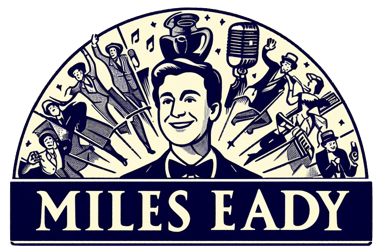Songs That Moved the Plot: The Golden Age of the MGM Musical (1940s–1950s)
The Integrated Hollywood Musical
Previous: Fred & Ginger — The Dance Duo Who Redefined Romance →
Next: Stage-to-Screen — When Broadway Took Over Hollywood →
Songs That Moved the Plot: The Golden Age of the MGM Musical (1940s–1950s)
After Fred and Ginger glided through the 1930s, the movie musical didn’t just grow more glamorous — it grew up.
This was the age of the integrated musical, where songs weren’t detours — they were the destination. They expressed feelings. They moved the story forward. They were, for the first time, essential.
Welcome to the MGM Dream Factory, where song, story, character and choreography fused into something sublime.
What Is an Integrated Musical?
In an integrated musical, a character doesn’t sing because it’s time for a number — they sing because there’s no other way to express what they're feeling. Dialogue melts into melody. Steps reveal psychology.
At the centre of this transformation? A quietly revolutionary producer named Arthur Freed.
The Arthur Freed Unit: MGM’s Secret Weapon
Freed, a former lyricist, gathered the best in the business and built a kind of musical dream team:
Directors like Vincente Minnelli
Writers like Betty Comden and Adolph Green
Performers like Gene Kelly and Judy Garland
Together, they created musicals that were:
Visually lush
Emotionally layered
Seamlessly constructed
Key Films of the Golden Age
Meet Me in St. Louis (1944)
Theme: Nostalgia, family, longing
Iconic songs: The Trolley Song, Have Yourself a Merry Little Christmas
Why it matters: Music becomes memory. Judy Garland’s wistful performance roots the story in domestic yearning.
An American in Paris (1951)
Theme: Art, fantasy and romance
Highlight: A surreal 17-minute ballet finale
Why it matters: Gene Kelly doesn’t just dance — he dreams, drawing emotion out through colour and composition.
SIngin’ in the Rain (1952)
Theme: The chaos of Hollywood’s sound revolution
Key songs: Good Morning, Singin' in the Rain, Make ’Em Laugh, Moses Supposes
Why it matters: Satire meets sincerity. The film is both a love letter and a meta-commentary on musicals themselves.
Watch: “Good Morning” – Singin’ in the Rain (1952)
A tap-happy classic. Three friends, one sofa and a lot of optimism — all while casually redefining musical staging.
Curtain Call: Why It Faded
By the mid-1950s, the dream started to dim:
The studio system collapsed
Television rose
Audiences wanted realism over Technicolor perfection
But for a glittering moment, MGM and its collaborators created a new cinematic language — one where emotion sang, and dancing meant everything.
Want to go deeper? Watch my intro to Singin’ in the Rain, filmed at the BFI.
It's not just a classic — it's a musical about making musicals. In this introduction, I talk about its genius, charm and why it still dazzles (especially in that downpour).
And here’s my intro to An American in Paris.
Gene Kelly swaps rain for Gershwin in this classic. In this introduction, I unpack how the 17 minute ballet finale came to be — and why it was one of the most ambitious things ever committed to Technicolor.
Further Reading
MGM’s Greatest Musicals: The Arthur Freed Unit – Hugh Fordin
The definitive behind-the-scenes history of the creative team that built the Golden Age.
Buy it here
Navigate the Series:
⬅️ Previous: Fred & Ginger — The Dance Duo Who Redefined Romance
➡️ Next: Stage-to-Screen — When Broadway Took Over Hollywood
We go from the dream factory to the legit stage — when Hollywood fell hard for Broadway in the 1950s and 60s, and started adapting everything from Rodgers and Hammerstein to Sondheim. The hills are alive and the jets are snapping their fingers...



